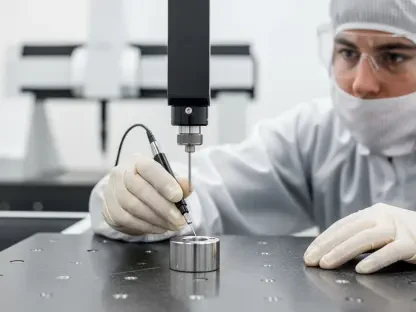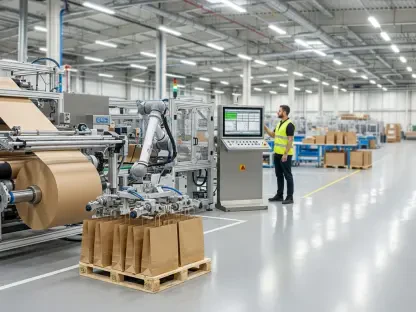In a rapidly advancing aerospace industry, Shanghai stands at the forefront of China’s space exploration and technological innovation. Today, we have with us Kwame Zaire, an expert in aerospace manufacturing, electronics, and equipment, who will delve into Shanghai’s pivotal role and future ambitions in the aerospace sector. Kwame, an esteemed thought leader in predictive maintenance, quality, and safety, offers a wealth of insights into how Shanghai is fostering an aerospace ecosystem that aligns with global advancements.
Can you describe the significance of China’s 10th Space Day being launched in Shanghai this year?
The launch of China’s 10th Space Day in Shanghai signifies the city’s growing influence in aerospace technology and its pivotal role in national ambitions. This event brought together leaders from across the globe, underscoring Shanghai’s commitment to innovation and international collaboration. It’s a testament to the progress Shanghai has made in establishing itself as a key player in space exploration.
How has Shanghai contributed to China’s aerospace ambitions over the past few years?
Shanghai has been instrumental, serving as a hub for aerospace innovation and production. With over 240 aerospace firms, the city is not just a manufacturing powerhouse but also a center for research and development. It’s driving forward key projects and initiatives, like the Spacesail Constellation, aiming to enhance China’s global competitiveness in the sector.
What role does the Shanghai government play in fostering a world-class aerospace ecosystem?
The Shanghai government has been pivotal in creating a supportive environment for the aerospace sector. Through strategic public-private partnerships and policies that encourage technological integration into urban infrastructure, the government is boosting innovation and facilitating the growth of a dynamic aerospace ecosystem.
How is the city integrating space technologies into urban modernization?
Shanghai is leveraging space technologies to enhance urban living—from smart city initiatives to improved communication systems. They’re integrating these technologies for a more connected and efficient urban environment, addressing everything from transportation to digital infrastructure.
What are some key announcements made during this year’s Space Day event?
Some major announcements included lunar sample-sharing agreements under the Chang’e-5 mission and the launch of the Fengyun Space Weather System. Both initiatives highlight China’s dedication to international cooperation and its strategic progression in space exploration technologies.
Can you explain the significance of the lunar sample-sharing agreements under the Chang’e-5 mission?
The lunar sample-sharing agreements exemplify China’s commitment to scientific collaboration and knowledge sharing. By involving international institutions in analyzing lunar samples, China enriches global understanding of the moon and fosters stronger international relationships in the scientific community.
What is the Fengyun Space Weather System, and why is it important?
The Fengyun Space Weather System is a substantial advancement aimed at monitoring space weather, which is crucial for understanding and managing the impacts on Earth’s environment and satellite operations. This system represents significant progress in ensuring the safety and efficiency of space and ground-based technologies.
How is Shanghai planning to cultivate a commercial aerospace manufacturing cluster?
Shanghai is crafting policies to stimulate a vibrant aerospace manufacturing cluster, focusing on infrastructure, technological innovation, and collaboration. This includes setting up advanced facilities and fostering an environment conducive to research in aerospace technologies, making it a beacon for commercial aerospace endeavors.
How does China’s strategy in low-Earth orbit satellite networks compare to its global rivals?
China’s strategy in developing low-Earth orbit satellite networks is ambitious, vying to compete alongside entities like SpaceX’s Starlink. By expanding its satellite constellation and enhancing communication technologies, China aims to secure a significant position in this competitive global arena.
What recent achievements has Shanghai Spacesail made in the realm of satellite launches?
Shanghai Spacesail has successfully launched 18 satellites in a single mission, adding to their constellation and marking a significant achievement in China’s space endeavors. This positions them well on the path to rivaling global satellite network giants, demonstrating China’s rapid advancements in satellite technology.
How is the Spacesail Constellation expected to compete with systems like SpaceX’s Starlink?
The Spacesail Constellation is designed to provide reliable, high-speed satellite Internet, comparable to Starlink, but with a focus on service in remote and underserved regions. It aims to bridge the digital gap by offering connectivity where traditional networks fall short, thereby expanding access globally.
What unique capabilities does the Spacesail Constellation offer in terms of satellite Internet services?
Spacesail Constellation offers cutting-edge satellite Internet services characterized by low latency and high-speed connectivity. The flexibility of their services allows them to cater to various industries, providing essential internet solutions in regions lacking robust ground networks.
Can you discuss the collaboration between Shanghai Spacesail and Thailand’s National Telecom?
This collaboration aims to bolster Thailand’s digital economy through enhanced satellite Internet services, leveraging Shanghai Spacesail’s expertise and technology. It’s a stepping stone towards stronger economic ties and highlights the potential of international partnerships in driving technological advancements.
What market gaps is the Spacesail Constellation aiming to fill, particularly regarding areas with weak ground networks?
Spacesail Constellation specifically targets underserved areas, such as remote geographical regions where terrestrial networks struggle. By ensuring reliable satellite communications, it addresses a crucial need, contributing to the reduction of the global digital divide.
Can you elaborate on the key innovations by Shanghai Genesat Aerospace Technology Co Ltd in satellite manufacturing?
Shanghai Genesat has pioneered innovations in modular satellite designs and manufacturing processes. Their ability to produce large-scale, cost-effective satellites stems from standardized designs and cutting-edge production technologies, setting a new benchmark in the industry for efficiency and scalability.
What impact has the G60 factory in Songjiang District had on satellite production?
The G60 factory has revolutionized satellite production by significantly increasing output capacity and driving efficiencies. With its cutting-edge facilities, it has become a cornerstone of Shanghai’s aerospace manufacturing landscape, bolstering both domestic and international satellite demands.
How do Genesat’s modular designs and automated production lines benefit the aerospace industry?
Genesat’s modular and automated production approach allows for rapid scalability and reduced production costs. This flexibility not only meets growing demand but also drives advancements in satellite technology, ensuring up-to-date solutions for a fast-evolving market.
What distinguishes ComNav’s navigation satellite chips in the global market?
ComNav’s chips are ahead of the curve, using a 22-nanometer manufacturing process that outpaces many Western competitors. This technological edge provides superior positioning accuracy, essential for modern applications like autonomous vehicles and advanced agricultural systems.
How have ComNav’s chips influenced the drone and autonomous vehicle industries?
The high precision of ComNav’s chips revolutionized navigation technologies, enabling seamless operations such as automated drone flights and autonomous vehicle navigation, which enhances efficiency and operational capacity across several commercial sectors.
What strategies is ComNav using to mitigate global trade risks and ensure chip compatibility with emerging technologies?
ComNav is localizing production and focusing on research to maintain compatibility with new satellite technologies. By doing this, they mitigate risks associated with global trade tensions and ensure that their chips remain technologically relevant and competitive worldwide.
What are Shanghai’s future goals in terms of rocket and satellite production by 2027?
By 2027, Shanghai aims to double its production capabilities, targeting 100 commercial rockets and 1,000 satellites annually. This ambitious goal is part of the city’s strategy to dominate the reusable rockets and low-cost satellite market, advancing China’s space exploration ambitions.
How does Shanghai plan to position itself as a hub for reusable rockets and low-cost satellite manufacturing?
Shanghai is aiming to establish a strategic foundation for reusable rockets and affordable satellite production by investing in new technologies, infrastructure, and fostering collaborations that drive down costs while enhancing capabilities.
What types of events are included in the China Space Day program in Shanghai?
The China Space Day program includes over 40 events like international conferences, workshops on satellite Internet, and educational activities related to space science. These events aim to promote innovation and public interest in aerospace developments.
Can you discuss the significance of this year’s theme, “Where Sea Meets Moon, We Embrace the Stars”?
This year’s theme emphasizes China’s vision for peaceful exploration and shared benefits of space technology. It highlights the harmonious balance of harnessing space’s potential to foster growth and collaboration on a global scale, steering the country’s aerospace ambitions toward universal development.
How does the China Space Day initiative promote the aerospace spirit and public engagement in the country?
China Space Day strengthens national pride and public curiosity about space exploration. By showcasing achievements and fostering dialogue, it engages the public, inspiring future generations, and fueling interest and investment in aerospace technologies and sciences.
What is your forecast for Shanghai’s aerospace sector development in the coming years?
Shanghai’s aerospace sector is set to expand rapidly, driven by strategic investments and innovations. I foresee the city becoming a central hub for cutting-edge space technology, enhancing its leadership globally while setting new standards in aerospace manufacturing and exploration.









